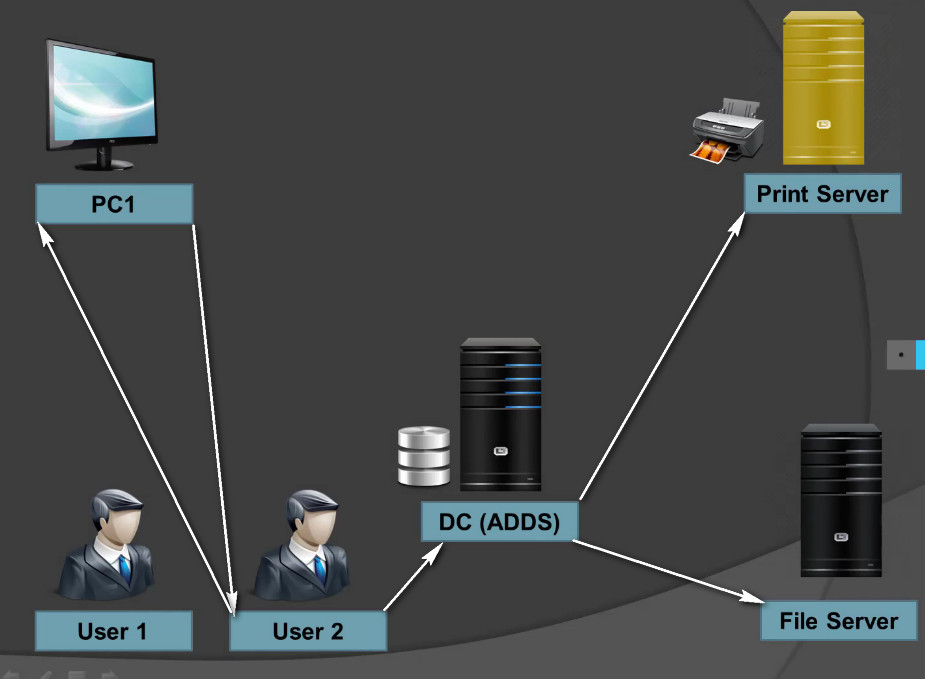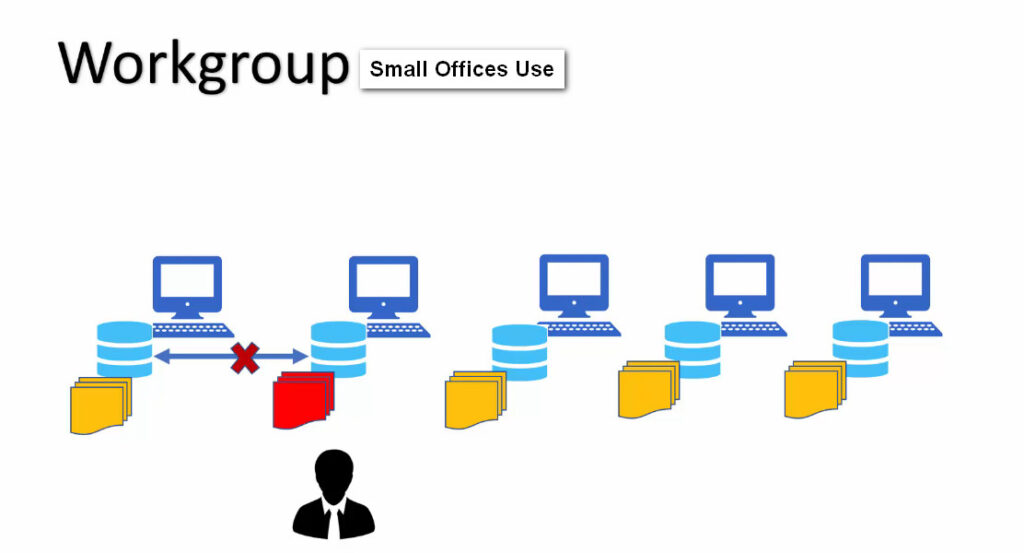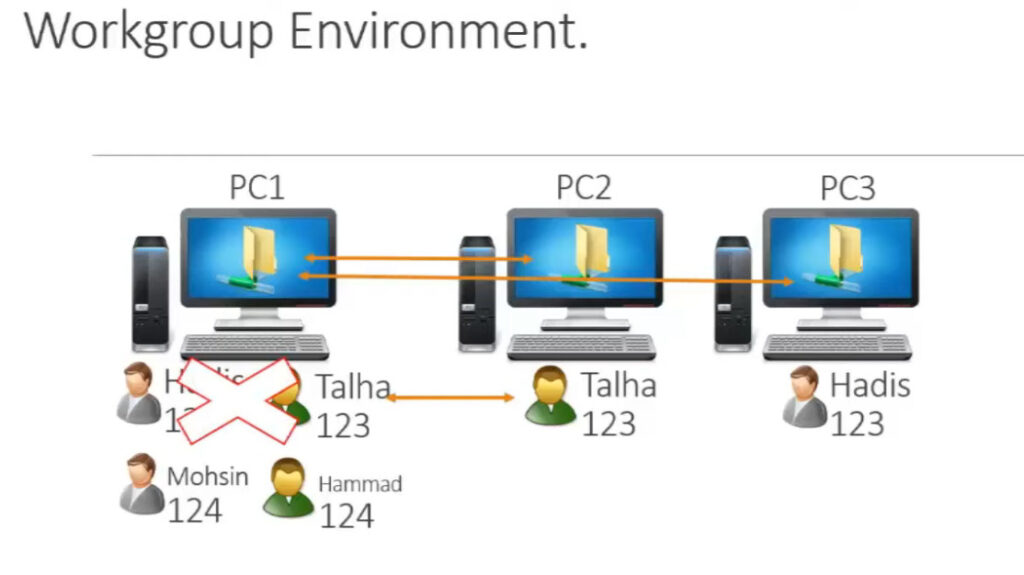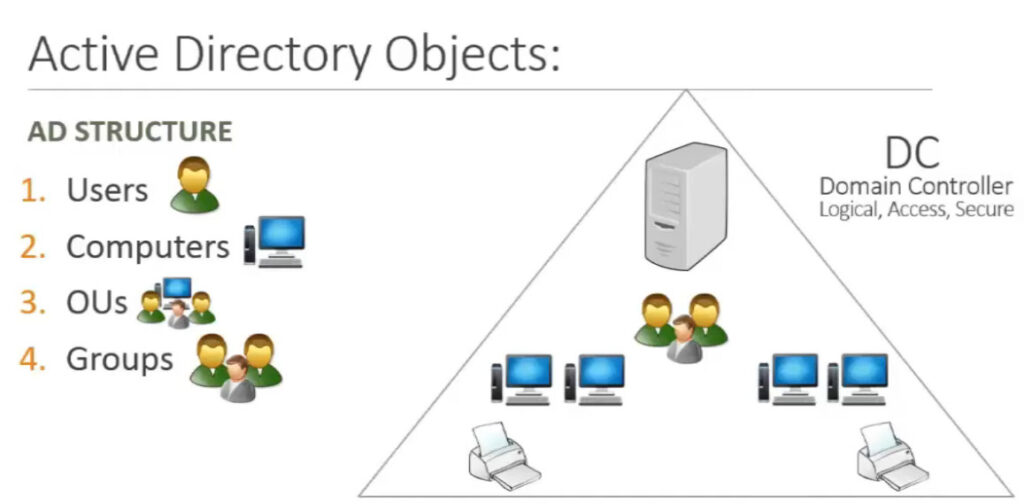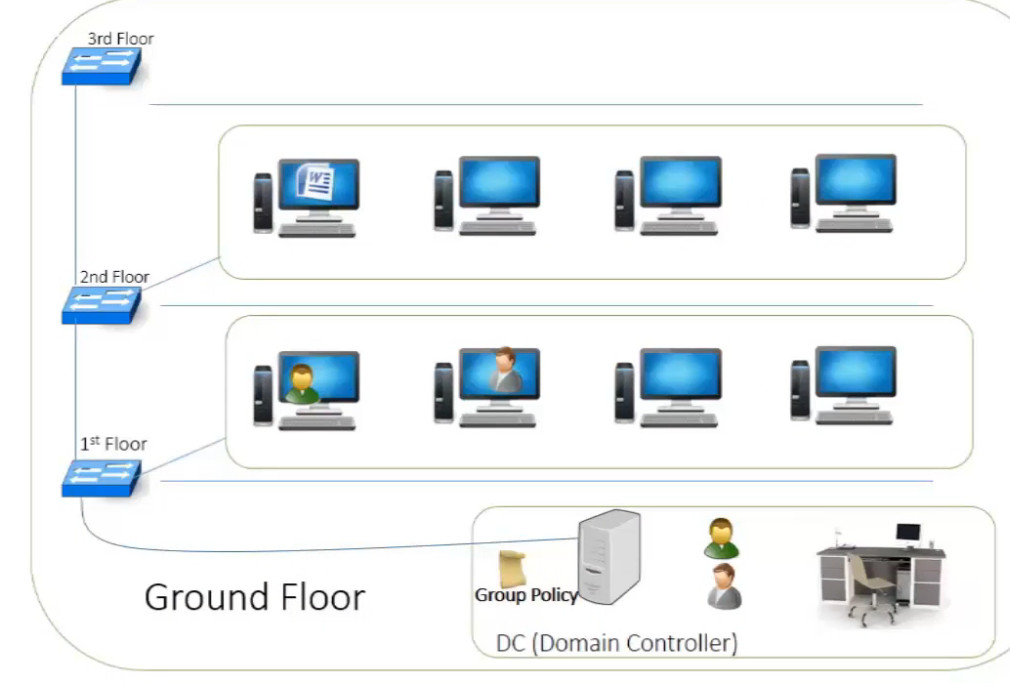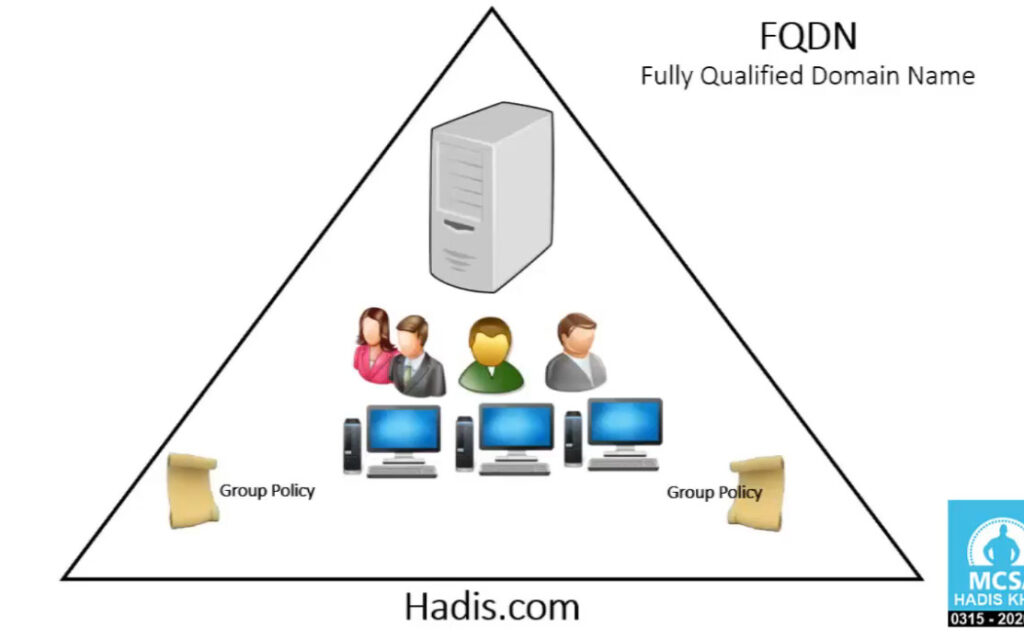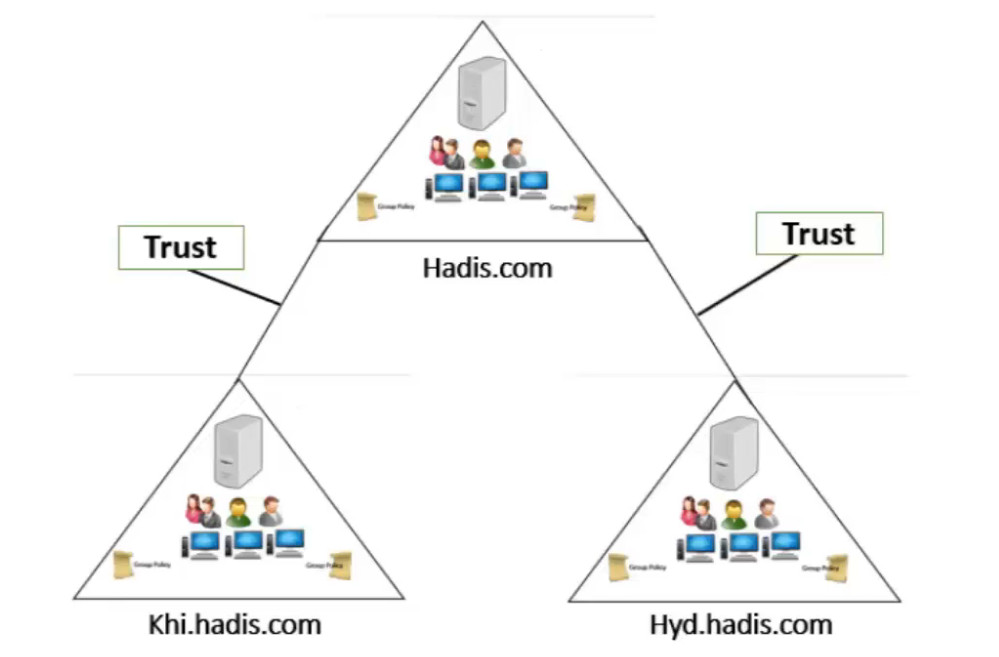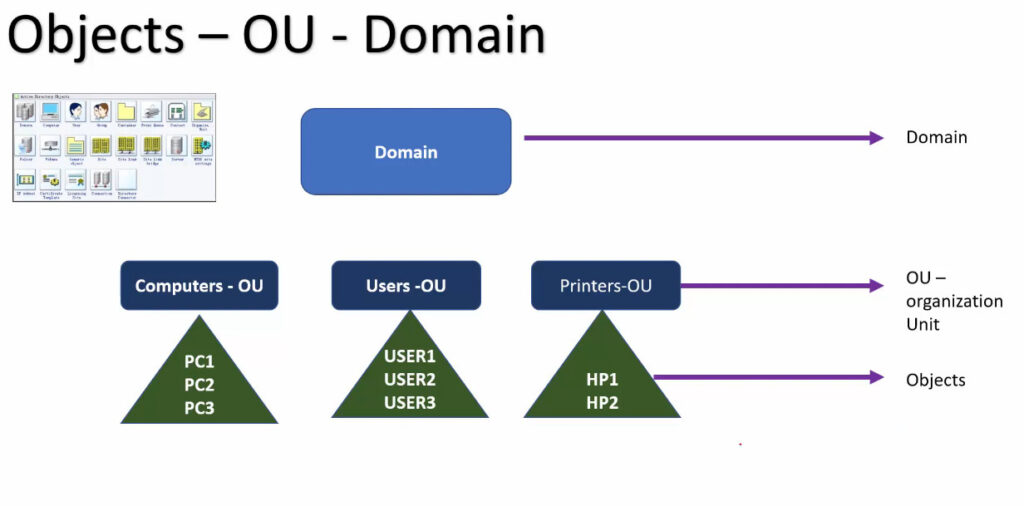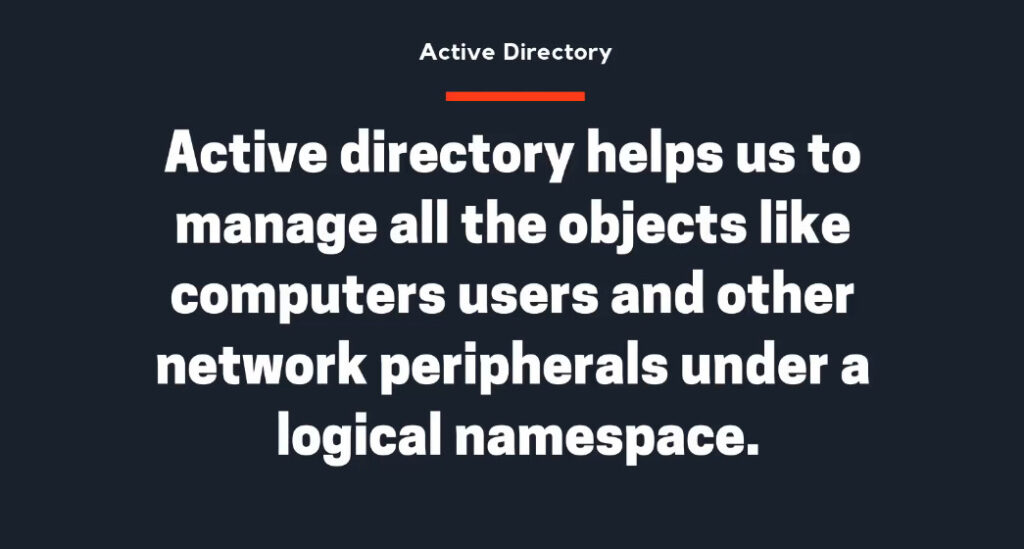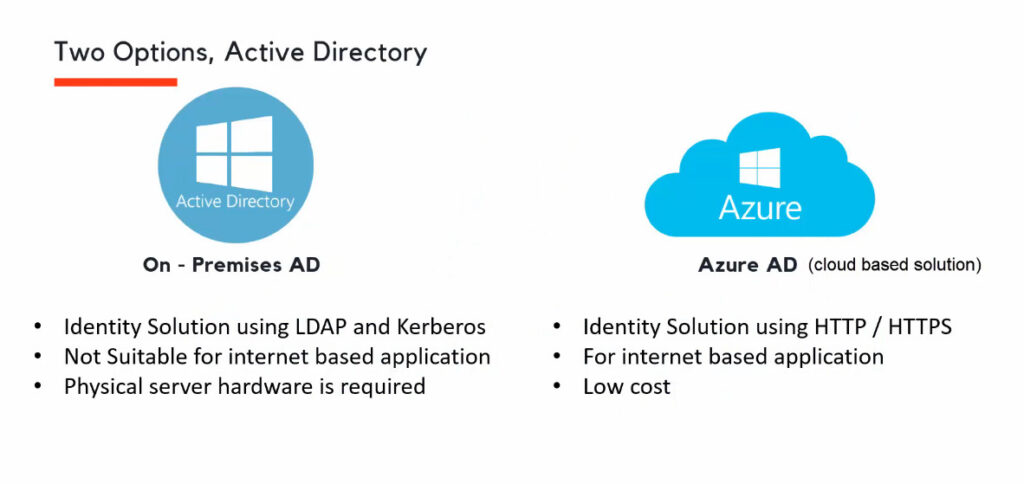- 8777701917
- info@saikatinfotech.com
- Basirhat W.B
Active Directory (AD) is a directory service developed by Microsoft to manage and organize the network resources of a business or organization. It is primarily used in Windows-based environments and helps administrators efficiently manage users, computers, permissions, and other network resources within a domain.
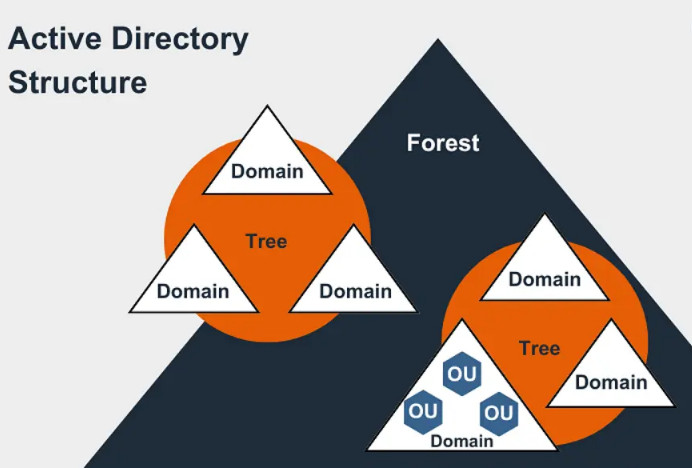
Centralized Authentication and Authorization:
Directory Structure:
Group Policies:
DNS Integration:
Trust Relationships:
Replication:
Security and Access Control:
Scalability:
In summary, Active Directory is a comprehensive solution for managing user authentication, access control, and network resources in Windows-based environments. It is a core component of IT infrastructure in many organizations.
Using Active Directory (AD) and Domain Controllers (DC) in your office or company provides numerous advantages, particularly when it comes to security, management, scalability, and efficiency. Below are some of the main reasons why AD is commonly used to control networks in businesses and organizations:
Using Active Directory with Domain Controllers in your office or company brings numerous benefits, such as centralized user management, improved security, scalability, cost-effectiveness, and streamlined access to resources. These advantages make AD an essential component for organizations of all sizes, helping businesses stay secure and efficient while allowing for easier administration and expansion.


